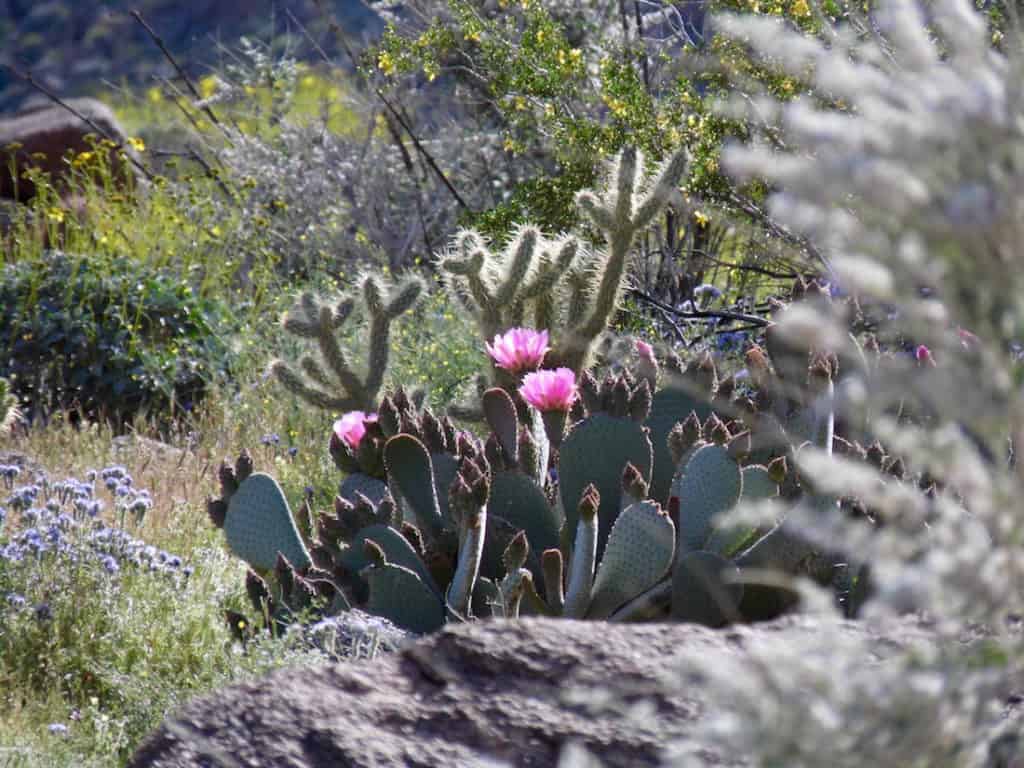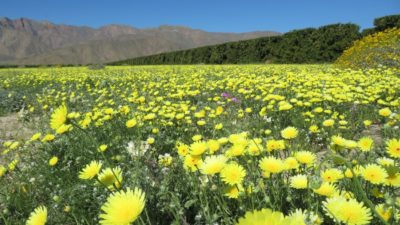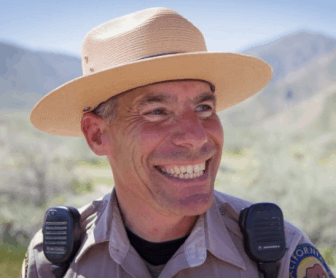
Following a decade-long drought, the Anza-Borrego Desert State Park has been transformed into a stunning super bloom after receiving ten inches of rain. “There’s nothing better than when you’re driving down to Montezuma Grade and dropping down into the desert floor, it’s beautiful,” said Norb Ruhmke, acting district superintendent for the Colorado Desert District.
As the wet winter brings a spectacular spring display, thousands of visitors from all over the world have followed. Now, California’s largest state park (roughly the size of Rhode Island) is causing major traffic jams on the SR22. The park is a two-hour drive from San Diego, Riverside, and Palm Springs.
The unprecedented Anza-Borrego super bloom dazzles in a show of desert sunflowers, golden California poppies, dune evening primrose, sand verbena, ghost flowers, monkey flowers and wild Canterbury bells. Even the ocotillo and beavertail cactus have begun to bloom. Other wildlife in the area includes snakes, bobcats, coyotes, and the park is a favorite of bird watchers.

“Plentiful rains in December, January, and February have encouraged the development of a spectacular showing of annual plants in the flower fields north of town, along trails in western canyons, and even in the badlands,” read Anza-Borrego’s website.
Normally, the park only has about 30,000 visitors annually, but last March, officials recorded over 90,000 people in just a few weeks. “The word seemed to get out faster this year and more people seemed to be coming to the visitor center,” said Park guide Sally Theriault, who hasn’t seen such a bloom since 2005. ”We were really just about at capacity.”
With the Borrego Valley in its center, the desert is bordered to the south by the Vallecito Mountains and to the north by the Santa Rosa Mountains. Still, the arid desert is entirely without the relief of shade, and the landscape is generally dominated by dry shrubs and rocks. Temperatures regularly well exceed 100 degrees (F) during the summer.

“I’m looking at a whole field of this bluish purple phacelia. And in this foreground of the Coyote Mountains, that’s nothing but poppies going 5, 6 miles up-canyon,” reported beloved park ranger, Steve Bier to NPR.
“Some of these seeds have been underground for maybe decades, if not a century or more, we just don’t know,” Bier continued. “Some of these places have not seen water in 10, 15, 20 years, and now they’re a blanket of flowers.”
In a shocking turn of events, Steven Bier was killed in a shooting on April 1st. He is survived by his wife, Heidi and their 11-year-old son, Lorne. Details have not yet been released.


